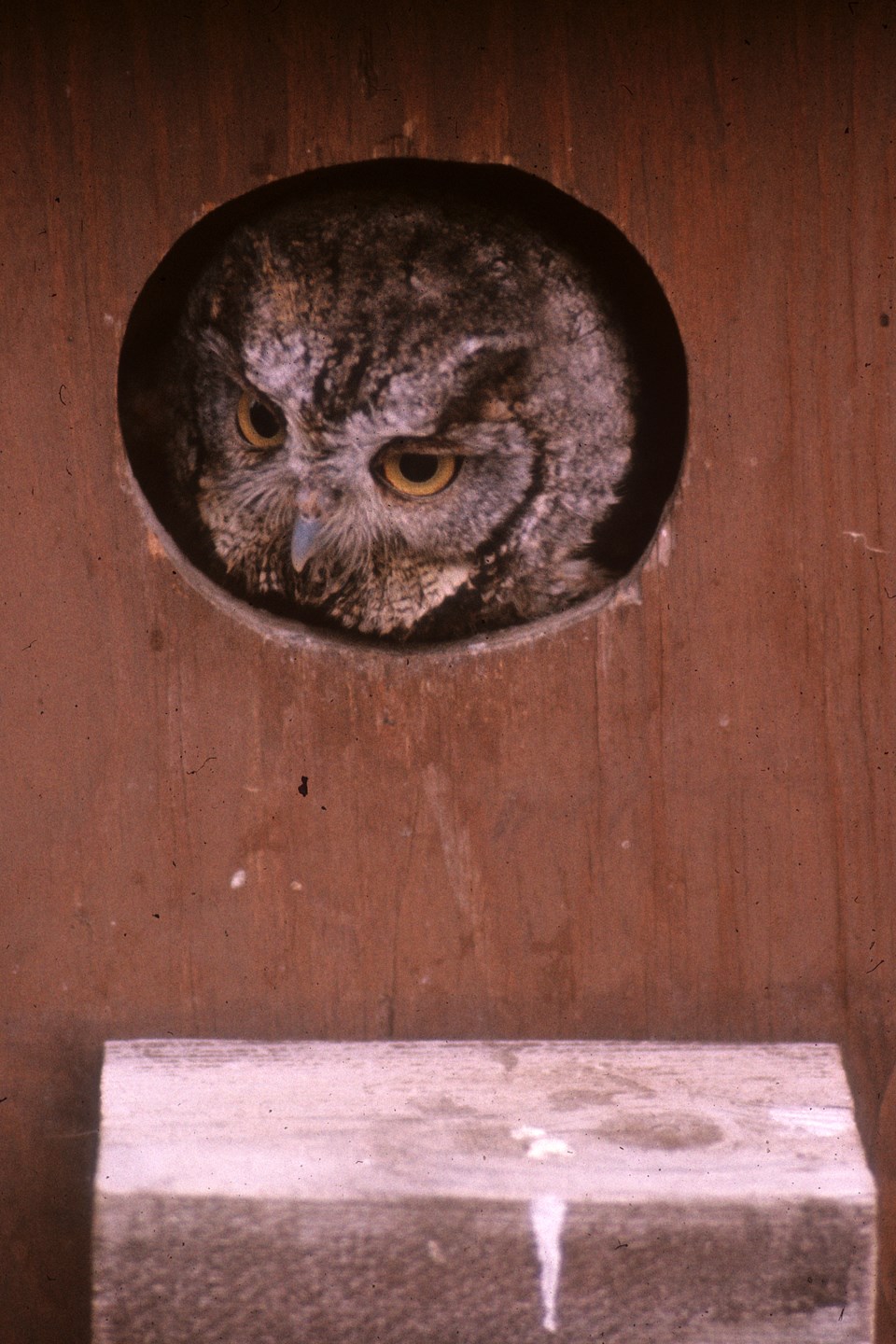It’s been said that winter is the time for planning ahead, supposedly because you have all this idle time on your hands. Ha! But OK, maybe it is the time to prepare for some spring-related projects.
Any species of any critter kingdom needs four basic ingredients within their chosen habitat to survive: food, water, shelter and space. By ‘space’ I mean territory or area within which they can find enough of the other three ingredients to sustain themselves without intense competition with their neighbours.
Overcrowding due to the lack of enough space quickly leads to a shortage of food, water and shelter, which then leads to weak individuals that spread disease, have short tempers, exhibit aggressive bullying, and sometimes results in a drastic reduction in the population. Now who would want to live in a world like that? So what to do?
I am hereby introducing the Bird Bill: More Homes Built Faster and Better Everywhere. These houses are, of course, designed for the feathered members of our community, not the human influenced concept of feathering one’s nest.
Particularly in southern Ontario, where all the human sprawl seems to be sprawling, natural habitat is at an all-time low. Large tracts of forests with old hollow trees are very few and far between, as are quiet pasture lands and wildflower-filled fallow fields. The growing number of homeless birds needs your help.
OK, back to all your spare time. As the temperatures rise and spring beckons in an alluring manner on the seasonal horizon, the birds will soon be arguing amongst each other as to whose nesting territory your feeder is located within; if you’re going to set up an avian ‘tavern’ you need to be aware of the ripple effect of attracting prospective residents to the neighbourhood.
So I suggest you now turn your attention to shelter provision. Many species of birds like to nest inside a hollow tree, that cozy shelter providing them protection from both weather and predators. As mentioned, the inventory of old and hollow trees is less than satisfactory, so here’s where you can get busy with a bird housing assistance program.
Chickadees like to nest in cavities of trees, as do tree swallows, bluebirds, wrens, flickers, wood ducks, woodpeckers, nuthatches, sapsuckers, screech owls and kestrels. You may not have enough space to attract all of these birds, but even a moderate-sized back yard can become home-base for a wren (wrens are great at picking your garden clean of bugs).
There have been dozens of books, brochures, and now websites devoted to nesting boxes, each stating that every species of bird has very specific size requirements of the box.
Two sets of dimensions are critical to the potential success of attracting a bird family to use your nesting box: the diameter of the entrance hole and the interior dimensions. Too big and the birds may not feel cozy; too small and certain species will be restricted from entering.
You may have noticed that I’m suggesting that you build said nesting boxes. While I acknowledge that not everyone has a full and heated carpentry workshop set up in the garage or basement, there is also a lack of retail outlets that carry a full line of nesting boxes. Believe me, I’ve looked.
There are a few fancy garden boxes that are more pleasing to the human owner’s eye than to a feathered would-be tenant, and any actual functional boxes are in the price range of $60 to $80. Ouch!
So maybe contract a local kid whose shop skills are burgeoning, or a seasoned carpenter who likes to put together little wooden boxes. High school wood-working shops are also looking for community projects. Scrap ends of pine boards work just fine as building material.
Whether you buy or build, there is another aspect of any nest box that needs your attention: the clean out door. Like any BnB operator (Birds and Boxes) you have to clean things up a bit between visitors. This chore is best done in late winter, prior to spring nesting season.
Unfortunately, many commercial nesting boxes come completely sealed. However, to clean out the old nest and debris, an access door must be built-in for a proper cleaning. Note that rarely do you have to add material within the bird box, although that chore is appreciated for wood ducks and screech owl boxes (in which case you use wood shavings not sawdust, and pine or poplar shavings not red cedar).
Whether you could consider yourself a BnB operator or a provider of avian STR units, now is the time to put your development plans together. It is easy to avoid a MZO (Misguided Zany Options), just check out a few websites that have copious info on bird house constructions and placement.
While writing this I looked out the window and noticed there are snowflakes falling, so I guess the bird feeders should be topped up. While I’m out and about I’ll take a look in the wood shed for a few extra boards to slap together a new box or two. Yes indeed, new homes built faster and better, everywhere.
